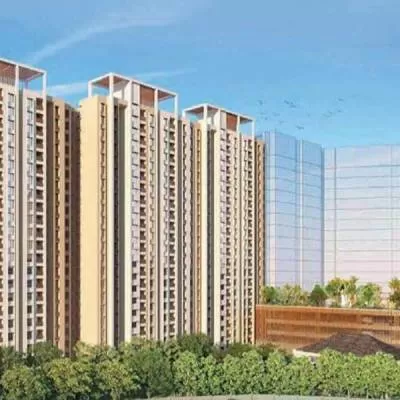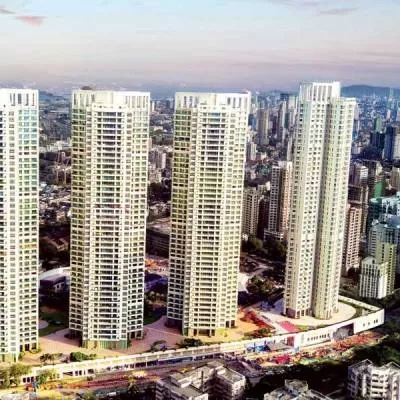- Home
- Real Estate
- Excellence, Safety, Speed

Excellence, Safety, Speed
One of Asia´s most ambitious and mammoth road projects, the Jammu-Udhampur Highway is almost complete and on its way to create history for being built in record time. There are multiple dimensions to this project that will enable a traveller to reach Udhampur from Jammu in just 45 minutes. It has been made possible by transforming NH1-A, which connects the Kashmir valley to Jammu and the rest of India. The expansion and realignment of this project is part of Phase-II of the National Highways Development Programme (NHDP), entrusted to the National Highways Authority of India by the Government of India. Scheduled to be completed in September 2014, the project will create a national record for being the fastest hill-road project to be completed in the country.
The background
The NH1-A has economic, cultural and strategic importance. Every year, it carries thousands of devotees and tourists to the shrines of Amarnath and Vaishno Devi, as well as to Srinagar and Leh.
´This route is very important owing to the movement of the Armed Forces to the national border. The valley is cut off during winters, so the movement of daily commodities through this corridor is of importance,´ says RP Singh, Project Director, NHAI, ´At present, about 15,000 vehicles ply daily on this route, of which 3,000 vehicles belong to Defence alone. There is to-and-fro military movement throughout the year.´
The challenges
The four-lane Jammu-Udhampur Highway project involves the construction of 76 bridges, viaducts and underpasses, 223 culverts, 10 km of retaining wall, 27 km of breast wall and four twin-tube tunnels. ´Although we call it a road project, it is actually a project of structures. Rarely do we see a highway with such diverse elements. It is a complex highway and civil engineering project,´ says Ananta Kumar, who heads the Udhampur team.
To develop a project of this gigantic nature was a task in itself.
Arun Kumar Mishra, who heads the Jammu team, adds another perspective to the nature of the work, saying, ´Normally, 4.5-5 lakh cu m of earthwork is carried out in a 30-km road project in three years. But here, we had to carry out 5-6 lakh cu m of earthwork each month, which was a challenge in itself.´
Tech talk
The project is located in the Himalayas with varied rock strata. Owing to this, it required the construction of long sections of retaining walls to support and protect the road from debris and rocks. ´It was necessary to adopt several techniques instead of going for a conventional RCC retaining wall,´ says Kumar. ´So we went for an RCC retaining wall, gabion wall and RE walls.´ The blasting technique was not allowed during the construction of the project. Excavation had to be done using rock breakers and eccentric rippers. All environmental safety norms were strictly followed while carrying out these methods.
To overcome the geological challenge, Afcons Infrastructure adopted several advanced construction methods. Among the many innovations, it implemented a novel technique of tunnel construction where an integrated waterproofing arrangement was used. The system consisted of integrated waterproofing where the waterproofing agent was directly mixed with steel fibre-reinforced shotcrete (SFRS). In between the initial layer of SFRS and its final layer, a spray-based bonding agent was applied that not only provided the second level of waterproofing but acted as a bonding agent for SFRS.
Further, the RCC lining that involved the use of a gantry was replaced with SFRS and lattice girder, which made the construction of the tunnels independent of a gantry and execution a cakewalk.
A road header machine was introduced for the first time in conjunction with a drum cutter inside the tunnels. Both machines combined seamlessly to cut through the rock with scissor-like precision. Colonel Sanjiv Puri, Team Leader, SP Infra, explains how flexibility and resource mobilisation became a recipe for success. ´The logistics of this project have been managed very well,´ he asserts. ´Every facet of road-building has been dealt with in the project.´
Equipment take
About 19 Grove rough-terrain cranes are being used to build 54 bridges, 16 viaducts, eight cross ducts and four tunnels. The cranes are a mix of 60-tonne capacity RT765E-2 units and 30-tonne capacity RT530E-2 units. The Grove RT765E-2 and RT530E-2 cranes are being used to widen the highway.
Difficult terrain
The existing road is along a hilly terrain, winding through wildlife areas. It is strewn with blind curves making driving extremely dangerous. Any accident, minor or fatal, stalls traffic for hours at present. The new alignment has fewer curves and wider bends that allow an average speed limit of 60 km per hour (earlier, the average speed was 25-30 km per hour). Passenger safety is ensured at all points and smoother navigation significantly cuts down the risk of accidents.
Time zone
Work on this project began in 2011 with just 35 per cent of land available. The 64-km stretch had to be closely monitored to complete the job before schedule. To ensure the project does not get delayed, it was divided into two sections: Jammu and Udhampur in the Himalaya. For this, separate crack teams were created for both sections. ´The scheduled period to complete the project was 36 months,´ says Singh. ´We were anticipating a slight delay owing to the topography and other problems. However, this will be the fastest project in the hill area of the country where we are able to complete the project well ahead of schedule. In that way, it is a landmark project.´ Special incentives were given to workers for completing certain jobs on time. Together, the teams worked round the clock to pull off a national record. K Subrahmanian, Vice Chairman and Managing Director, Afcons Infrastructure, adds, ´The project demonstrated the very theme of operational excellence that Afcons has developed as a key differentiator vis-a-vis its competitors. While many road projects in the country have been delayed, this project comes as a whiff of fresh air and as a new business model for the nation as a whole. I believe such an achievement will motivate others.´
Socioeconomic boom
The construction of this road has changed the people´s way of life in the region. It has helped increase trade transportation, reduced transport costs and provided high-speed road connectivity in Jammu and Kashmir. What´s more, it has raised the bar for projects in India that too, at breakneck speed!
Project details
.........................................................
Total length: 64 km
Contractor: Afcons Infrastructure.
Tel: 022-6719 1000.
Fax: 022-2673 0047.
Website: www.afcons.com
Concessionaire: SP Infra
Website: www.sp-group.co.in
- Jammu-Udhampur Highway Project
- Construction
- Twin-Tube Tunnels
- Udhampur,
- National Highways Authority Of India
- Amarnath
- Vaishno Devi
- Srinagar
- Leh
- RP Singh
- Ananta Kumar
- Arun Kumar Mishra
- Rock Breakers
- Eccentric Rippers
- Afcons Infrastructure
- Tunnels
- Colonel Sanjiv Puri
- Sp Infra
- Equipment
- Road
- K Subrahmanian
- Transport
- Jammu And Kashmir
- NHDP
- SFRS
- RCC
An engineering feat, the Jammu-Udhampur Highway project comprised over 8,000 workers and the construction of 76 bridges, viaducts and underpasses, 223 culverts, 10 km of retaining wall, 27 km of breast wall and four twin-tube tunnels, in record time! One of Asia´s most ambitious and mammoth road projects, the Jammu-Udhampur Highway is almost complete and on its way to create history for being built in record time. There are multiple dimensions to this project that will enable a traveller to reach Udhampur from Jammu in just 45 minutes. It has been made possible by transforming NH1-A, which connects the Kashmir valley to Jammu and the rest of India. The expansion and realignment of this project is part of Phase-II of the National Highways Development Programme (NHDP), entrusted to the National Highways Authority of India by the Government of India. Scheduled to be completed in September 2014, the project will create a national record for being the fastest hill-road project to be completed in the country. The background The NH1-A has economic, cultural and strategic importance. Every year, it carries thousands of devotees and tourists to the shrines of Amarnath and Vaishno Devi, as well as to Srinagar and Leh. ´This route is very important owing to the movement of the Armed Forces to the national border. The valley is cut off during winters, so the movement of daily commodities through this corridor is of importance,´ says RP Singh, Project Director, NHAI, ´At present, about 15,000 vehicles ply daily on this route, of which 3,000 vehicles belong to Defence alone. There is to-and-fro military movement throughout the year.´ The challenges The four-lane Jammu-Udhampur Highway project involves the construction of 76 bridges, viaducts and underpasses, 223 culverts, 10 km of retaining wall, 27 km of breast wall and four twin-tube tunnels. ´Although we call it a road project, it is actually a project of structures. Rarely do we see a highway with such diverse elements. It is a complex highway and civil engineering project,´ says Ananta Kumar, who heads the Udhampur team. To develop a project of this gigantic nature was a task in itself. Arun Kumar Mishra, who heads the Jammu team, adds another perspective to the nature of the work, saying, ´Normally, 4.5-5 lakh cu m of earthwork is carried out in a 30-km road project in three years. But here, we had to carry out 5-6 lakh cu m of earthwork each month, which was a challenge in itself.´ Tech talk The project is located in the Himalayas with varied rock strata. Owing to this, it required the construction of long sections of retaining walls to support and protect the road from debris and rocks. ´It was necessary to adopt several techniques instead of going for a conventional RCC retaining wall,´ says Kumar. ´So we went for an RCC retaining wall, gabion wall and RE walls.´ The blasting technique was not allowed during the construction of the project. Excavation had to be done using rock breakers and eccentric rippers. All environmental safety norms were strictly followed while carrying out these methods. To overcome the geological challenge, Afcons Infrastructure adopted several advanced construction methods. Among the many innovations, it implemented a novel technique of tunnel construction where an integrated waterproofing arrangement was used. The system consisted of integrated waterproofing where the waterproofing agent was directly mixed with steel fibre-reinforced shotcrete (SFRS). In between the initial layer of SFRS and its final layer, a spray-based bonding agent was applied that not only provided the second level of waterproofing but acted as a bonding agent for SFRS. Further, the RCC lining that involved the use of a gantry was replaced with SFRS and lattice girder, which made the construction of the tunnels independent of a gantry and execution a cakewalk. A road header machine was introduced for the first time in conjunction with a drum cutter inside the tunnels. Both machines combined seamlessly to cut through the rock with scissor-like precision. Colonel Sanjiv Puri, Team Leader, SP Infra, explains how flexibility and resource mobilisation became a recipe for success. ´The logistics of this project have been managed very well,´ he asserts. ´Every facet of road-building has been dealt with in the project.´ Equipment take About 19 Grove rough-terrain cranes are being used to build 54 bridges, 16 viaducts, eight cross ducts and four tunnels. The cranes are a mix of 60-tonne capacity RT765E-2 units and 30-tonne capacity RT530E-2 units. The Grove RT765E-2 and RT530E-2 cranes are being used to widen the highway. Difficult terrain The existing road is along a hilly terrain, winding through wildlife areas. It is strewn with blind curves making driving extremely dangerous. Any accident, minor or fatal, stalls traffic for hours at present. The new alignment has fewer curves and wider bends that allow an average speed limit of 60 km per hour (earlier, the average speed was 25-30 km per hour). Passenger safety is ensured at all points and smoother navigation significantly cuts down the risk of accidents. Time zone Work on this project began in 2011 with just 35 per cent of land available. The 64-km stretch had to be closely monitored to complete the job before schedule. To ensure the project does not get delayed, it was divided into two sections: Jammu and Udhampur in the Himalaya. For this, separate crack teams were created for both sections. ´The scheduled period to complete the project was 36 months,´ says Singh. ´We were anticipating a slight delay owing to the topography and other problems. However, this will be the fastest project in the hill area of the country where we are able to complete the project well ahead of schedule. In that way, it is a landmark project.´ Special incentives were given to workers for completing certain jobs on time. Together, the teams worked round the clock to pull off a national record. K Subrahmanian, Vice Chairman and Managing Director, Afcons Infrastructure, adds, ´The project demonstrated the very theme of operational excellence that Afcons has developed as a key differentiator vis-a-vis its competitors. While many road projects in the country have been delayed, this project comes as a whiff of fresh air and as a new business model for the nation as a whole. I believe such an achievement will motivate others.´ Socioeconomic boom The construction of this road has changed the people´s way of life in the region. It has helped increase trade transportation, reduced transport costs and provided high-speed road connectivity in Jammu and Kashmir. What´s more, it has raised the bar for projects in India that too, at breakneck speed! Project details ......................................................... Total length: 64 km Contractor: Afcons Infrastructure. Tel: 022-6719 1000. Fax: 022-2673 0047. Website: www.afcons.com Concessionaire: SP Infra Website: www.sp-group.co.in




















